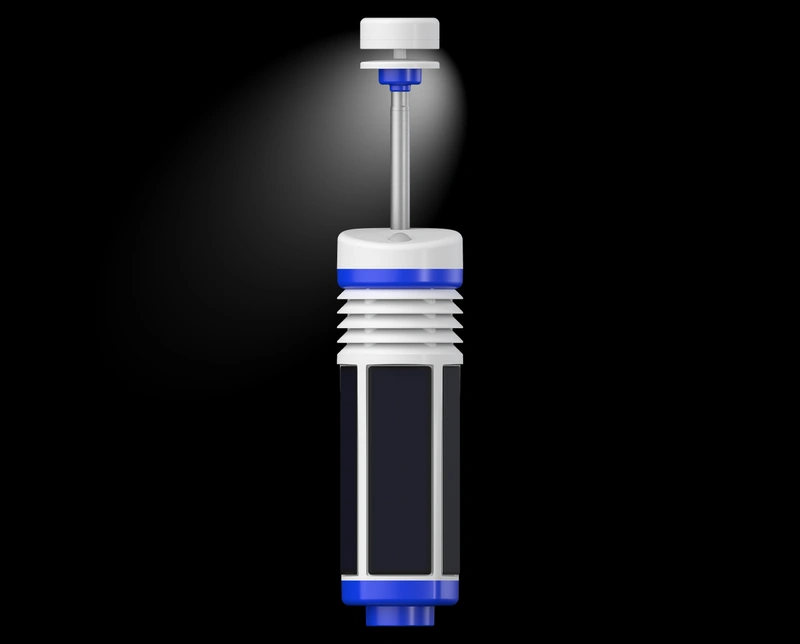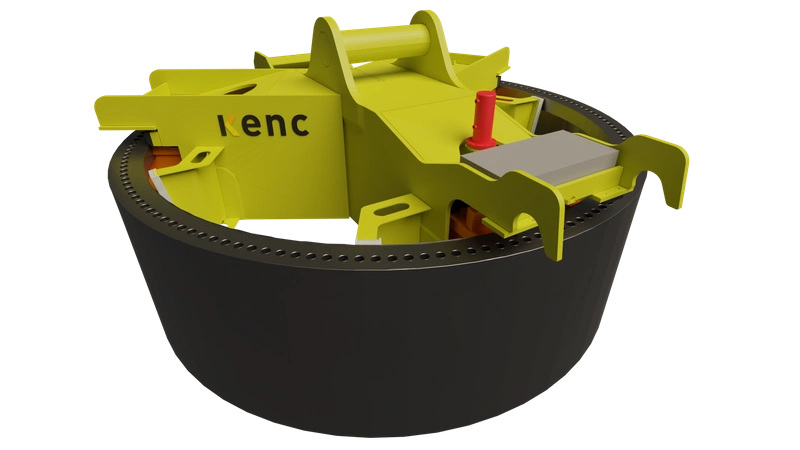New Technologies, Systems & Products

Balmoral Seamless Bend Stiffener Connector
Balmoral introduced a number of subsea solutions over the past few years, including Balmoral HexDefence and Balmoral FibreFlex, scour and cable protection systems respectively for the offshore wind sector. The latest product solution from Balmoral is a bend stiffener connector.
Bend restricting devices are usually attached at topside or seabed connection areas and are typically conically shaped polyurethane moldings with a cylindrical bore that fits over the asset.
In seamlessly integrating dynamic bend stiffeners with offshore structures, the Balmoral BSC features diverless installation and an elevated level of operational performance.
Diverless installation lies at the heart of this innovation while the design and manufacturing process adheres to API 17L standards. This commitment to operational efficiency is further highlighted by the incorporation of a reusable pull head which not only enhances installation timelines but also adds practicality to the overall process, the company claims.
The full system consists of a lead-in cone, BSC and dynamic bend stiffener. The BSC is drawn through a bellmouth located beneath a floating platform. As the BSC latching system engages with the bellmouth the anchoring mechanism comes into action. This latch secures the mechanism during descent and maintains system stability as the anchors find their place on the tapered neck of the bellmouth.

Methane Measurement Instrument
SLB’s End-to-end Emissions Solutions (SEES) business debuted a new methane point instrument, a self-installed continuous methane monitoring system that uses IoT-enabled sensors to detect, locate and quantify emissions across oil and gas operations. It provides operators with leak detection sensitivity in a small, durable, ‘plug-and-play’ solution. The technology automates continuous methane monitoring; contains an integrated solar panel, wind measurement and methane sensor; is designed to be self-installed in minutes, mounted on existing infrastructure and deployed at virtually zero cost. The methane point instrument supports the reporting requirements of the Oil & Gas Methane Partnership 2.0, or OGMP, the flagship reporting and mitigation program of the United Nations Environment Program.

Flange Monopile Upending Tool
KENC announced the commencement of fabrication for build a flange monopile upending tool [FMUT] for Van Oord. Designed to face the challenges of varying sea conditions, the FMUT is designed to be versatile and its engineering enables efficient upending and lifting of monopiles - with a diameter between 7.5 – 8 meters - while effectively managing the challenging side leads. The FMUT’s light yet strong design – with a weight of under 75 tons and the strength to lift an SWL of 1,600 tons - was achieved through a combination of various materials. The tool will be delivered in December.
Offshore Hydrogen/Ammonia Production Platform
An offshore hydrogen and ammonia production platform design from the Korea Research Institute of Ships & Ocean Engineering (KRISO) received approval in principle (AIP) from ABS. The design developed by KRISO produces green hydrogen using electricity generated by a wind farm. Among the features, the design consists of a desalination system that desalinates seawater and turns it into clean water, an electrolysis system that produces hydrogen by electrolyzing water, a compression system that pressurizes the produced hydrogen, a nitrogen generation system that separates nitrogen from the air, and an ammonia synthesis system that produces ammonia by reaction of hydrogen.
New ROV Tooling Rental Offering
Forum Energy Technologies (FET) introduced a new tooling rental offering for remotely operated vehicles (ROVs) in response to the changing demands of the subsea sector. With increasing ROV asset investment across hydrocarbon and offshore renewable energy, as well as defense sectors, FET’s new rental offering is designed to address the need for readily available tooling equipment in the development, operation, and maintenance of upcoming offshore projects.
Available immediately for rental are torque tools, linear actuator override tools (LAOTs), isolated hydraulic power units (IHPUs), and associated accessories.
The fleet of tooling will initially be manufactured and managed at FET’s UK facility in Kirkbymoorside, North Yorkshire. FET, which already has an existing rental fleet in Brazil, will also expand the availability of equipment to Europe, Asia and elsewhere in the Americas.
FoWeLo: Offshore Wind Farm Load-out Solution
Roll Group & Hebetec Engineering AG announced a shared patented solution for offshore wind farm load-outs, developed to provide efficient and cost-effective solutions to logistical challenges of large and heavy offshore wind farm components.
The patented FoWeLo system was developed to solve two critical industry challenges: the high cost and port logistics constraints of launching floating offshore wind foundations. The system offers a robust design using existing hydraulic equipment and temporary steel structures. It is designed to be fully containerized, with no restrictions due to tidal effects, which simplifies mobilization and ensures low CO2 emissions by using seawater as a counterweight.
Battery & Hybrid Solution
Skansi Offshore, a Faroese shipping company, is increasing its commitment to sustainable marine operations. In relation to the 10-year classification of platform supply vessel Kongsborg, the shipping company has now installed a battery and hybrid solution on board, designed to reduce greenhouse gas emissions and fuel consumption. SEAM delivered, and was the system integrator of, its effective hybrid solution, the e-SEAMatic BLUE. The system, boasting 1800kVA/620kWh, was installed in a dedicated pre-built deckhouse, complete with necessary auxiliary systems – significantly reducing the installation time onboard the vessel. The objective of this integration was twofold: a significant reduction in fuel emissions, as well as minimizing maintenance costs by operating with fewer engines. Anticipated fuel and CO2 savings with their new hybrid solution
-
Anticipated savings during sailing are around 4-5%.
-
For Dynamic Positioning (DP) operations, a reduction of 20-25% is expected.
-
Moreover, the hybrid system will also support shore power, allowing the ship to perform energy-intensive operations without firing up the generator set.
